Profile

Get to know Alan Phillips, Senior Researcher, Microbiology and Biotechnology Group
In this edition we interview Alan Phillips, one of the Highly Cited Researchers 2018. This list recognizes world-class researchers selected for their exceptional research performance, demonstrated by production of multiple highly cited papers that rank in the top 1% by citations for field and year in Web of Science.
Tell us a bit about your background and the main research areas you’ve worked on
Well, I started my life in Hong Kong and now I am a mycologist in the M&B Biotechnology Lab of BioISI. Since gaining my PhD from Wolverhampton University, England in 1980 I have worked as a research scientist in England, South Africa, Portugal and Thailand. For the first 12 years of my working life I worked on the epidemiology of sunflower, bean and pea diseases in South Africa. I then moved to Portugal where I turned my attention to systematic mycology working mainly on the Botryosphaeriaceae, a family of plant pathogens, saprobes and endophytes. Although Botryosphaeriaceae has been my main interest, I have also worked on the systematics of other genera of plant pathogenic fungi, notably Diaporthe and Plectosphaerella.
Presently I supervise four PhD students, one in Portugal, two in Algeria and one in Thailand. I have active collaborations with mycologists in Portugal, Italy, the Netherlands, Algeria, Czech Republic, Taiwan, China and Thailand. Apart from my research I am associate editor of four mycology journals, consultant to the Beijing Academy of Agricultural and Forest Sciences, visiting professor at Mae Fah Luang University in Northern Thailand, and have served two terms as President of the Mediterranean Phytopathology Union.
What research projects are you currently working on?
Before I say anything about my current projects I have to say a few words about why I study fungi. When most people think of fungi they think of plant pathogens, mouldy bread or mouldy patches on their bathroom ceilings. They are mostly unaware that fungi are one of the most important components of just about every terrestrial ecosystem, and play a major role in some aquatic ones. Fungi are the main decomposers that re-cycle nutrients and thus sustain the life of the ecosystem. Not only that but fungi have provided us with life-saving drugs and other useful by-products from their metabolism. Unfortunately, fungi have been understudied and we know so little about them. According to recent estimates we know only a tiny fraction of the probable total number of species that exist. The more we study fungi the more we see what they can do for us. An example is the genus Pesalotiopsis, which is now recognised as a huge, largely untapped source of biologically active metabolites, many of which are of pharmacological interest. One species can even decompose plastics. Yet others are emerging as foliar pathogens. I want to help search for the “missing” species, and that is the main thrust of our projects on fungal diversity.
I really enjoy working in the projects on fungal diversity of Northern Thailand and Southern China. The tropical climate and rich flora sustains an amazing diversity of fungi, many of which are new species and genera. One of these projects focuses on fungi on palm trees and continues to uncover taxonomic novelties. One of my students in Algeria is doing a similar study on date palms in the Sahara desert and considering the harsh, arid climate of the region he is finding a surprisingly diverse array of fungi. I have a Masters student who recently started a preliminary study of microfungi on palms in urban parks and gardens in Lisbon. It is early days yet but he is already finding a surprising number of different species, several of which are likely to be pathogens.
In collaboration with researchers in Beijing we are using a genomics approach to understand how virulence has evolved in certain species in genera where most species are saprobes or weak pathogens. In this work we concentrate on Botryosphaeriaceae.
Another project I am trying to get underway is on genetic diversity of Diplodia corticola on cork oak. This fungus is one of the factors contributing to decline of cork and other oaks in the Western Mediterranean region. So far I have a large collection of isolates from most countries and regions in the Western Mediterranean, now I have to get funds so that we can move this project forward.
Which living scientist/person do you most admire?
I can’t single out any one person in particular, even if I restrict my choice to mycologists. I admire those who have dedicated themselves to mycology and built large teams, even entire institutes. I also admire the ones who are working in difficult conditions and still manage to produce good science, albeit on a smaller scale. There are a lot of mycologists out there dedicating their lives to study fungi. The one that would that would gain by deepest admiration would be the one who can make mycology a science popular with the general public, with governments and with the organizations that distribute research funds. That person does not exist, but I predict that we will find him or her somewhere in East Asia.
What do you consider your greatest achievement in science?
I am proud of the system I developed in South Africa to predict outbreaks of white mould disease of beans and peas caused by Sclerotinia sclerotiorum. It is so simple to use and for irrigated crops grown during the dry season (like the high-value seed crops) the disease can be managed simply by regulating irrigation when the risk of disease becomes critical. But I consider my greatest achievement was to completely re-organize the genera and species in Botryosphaeriaceae within a modern taxonomic framework. When I first started to work on this family it was in a state of utter confusion with multiple names attached to single species, genera comprising species from more than one genus and it was almost impossible to apply species names with any confidence. The monograph I published in 2013 still stands as the definitive text on the family and it is now easy to distinguish and identify the species. More importantly, as a direct result of this work it is now clear that several species in the family are amongst the most damaging species causing trunk diseases in grapevines worldwide, and cankers and dieback in other woody hosts, such as oaks (including cork oak) and fruit trees.
Which words or phrases do you most overuse?
Without a doubt I far too frequently say, “Yes, I will do it” or something similar. I must learn to say “No” more often.
Tell us one odd/peculiar thing about yourself.
Nothing. Presumably some people may find something odd about me, but I consider myself quite normal.
News Highlight
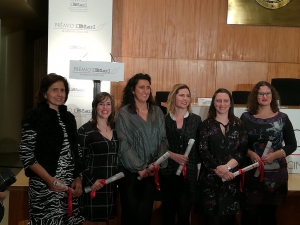
Bial Clinical Medicine Awards 2018: Honorable Mention for Mafalda Bourbon
The study “Translational Medicine in Familial Hypercholesterolaemia: from phenotype to genotype”, coordinated by INSA and BioISI researcher Mafalda Bourbon was distinguished with a honorable mention by the Juri of the Bial Clinical Medicine Awards 2018. The work describes the current knowledge on diagnosis and treatment of Familial Hypercholesterolemia and supports the integration of results from basic research in clinical practice.
Congratulations to Mafalda and her team!
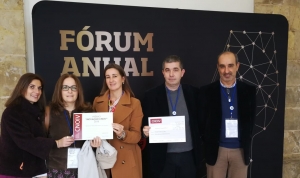
Innovation Prize CNOIV 2018 was awarded to a team led by BioISI-UTAD researcher!
We congratulate the winning team Paula Martins-Lopes, Leonor Pereira, Sónia Gomes and Cláudia Castro (BioISI-UTAD); José Ramiro Fernandes (UTAD and member of Chemistry Centre of Vila Real); José Eduardo Eiras-Dias and João Brazão (INIAV) and António Graça (Sogrape, Lda). This prize was awarded during the “Fórum Anual Vinhos de Portugal” in Coimbra amongst 23 other works, with the project “High Resolution Melting (HRM) applied to wine authenticity”.
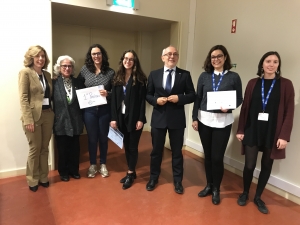
Filipa Tomé, BioISI´s Scientific Innovation Officer, was part of the winning team of the first edition of Ciências EIT Health Innovations Days
This event was organized within the activities of the European Consortium EIT Health and dedicated to the topic Patient-centred Care. Several challenges were launched to the participants by Health-related entities and companies, and within 24 hours the teams had to develop the idea and present a pitch to a jury composed of Luís Carriço (FCUL director), Daniela Dias Santos (EIT Health), Vítor Crespo (BGI), Joaquim Cunha (Health Cluster Portugal), and Maria de Belém. Filipa´s team developed HCare, a digital platform to improve patient quality of life after a stroke. The team was then invited to the Winner´s event in London in November, where all the winning teams across 18 European Innovation Days participated.
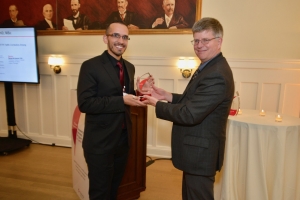
Miquéias Lopes-Pacheco wins Gilead Sciences Research Scholar Program in Cystic Fibrosis
Miquéias Lopes-Pacheco, a researcher from the FunGP group, was one of the winners of this year’s Gilead Sciences Research Scholars Program in Cystic Fibrosis. The mission of this program is to support innovative scientific research that will advance knowledge in the fields of pediatric and adult cystic fibrosis and provide support for junior faculty researchers in Canada, Europe, or the United States. The program has the duration of two years and includes financial support for the development of the project. Gilead Sciences offers this award to 2-3 junior researchers since 2011 and this is the first year that a junior researcher in Europe has received it.
Visiting Researcher
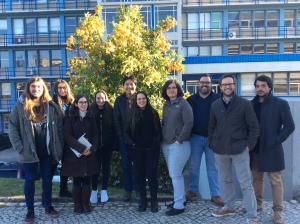
The Gene Expression and Regulation group had the pleasure of hosting Nham Tran, head of the Non-coding RNA Cancer Group at the Center for Health Technologies, Faculty of Engineering and IT, University of Technology, Sydney for five weeks ending this January.
We asked Nham a few questions to know more about his visit. Did you know he is co-supervising one of the BioSys PhD Programme students?
Tell us about the scope of your visit to BioISI.
I have been collaborating with Dr Margarida Gama Carvalho for several years and my visit is part of the LungCard project. This proposal seeks to develop a prognostic platform for late stage lung cancer treatment. In this regard, I have been working with her lab sharing my expertise in cancer diagnostics. Besides this project, I am also a co-supervisor for Tânia Monteiro Marques and it is an opportunity to catch up with Tania and discuss her project.
What are your research interests?
My laboratory in Australia seeks to understand the role of microRNAs in cancer biology with a particular focus on head and neck cancers (www.tranlab.org). We currently have two majors themes; the first is the application of serum microRNAs as biomarkers for the early detection of oral cancers. We are currently performing clinical testing both in the US and Taiwan. The second theme is to understand the regulatory roles of these mircoRNAs and how they can control genes in various cancer processes. Margarida and Tânia have been collaborating with us on the gene regulation aspects of oral cancers.
What was the outcome of your visit?
There were so many positive outcomes from my visits. By working together, we identified new projects and possible grant opportunities. This project will bring together our complement skills and further build on the collaboration. Also, there will be a student exchange later in the year which I am very excited about. Margarida has been a wonderful host, and both the Pinto and Gama Carvalho lab members have been very welcoming. I have really enjoyed interacting with everyone in the lab. We also meet up with Orfeu Flores from STAB VIDA to discuss the project and organise plans for testing of the LungCard device.
Did you have any time to visit Lisbon/Portugal during your free time here? What did you enjoy most?
During my time off, we just explored Lisbon and its surrounds mostly walking everywhere. Its such a beautiful city and the locals are very friendly. My wife spent her childhood is Lisbon and we have friends and family in Porto. We feel like locals and do all the normal things.
Get inspired with…
… Atomic Force Microscopy!
Invented in 1986, atomic force microscopes (AFM) enabled unprecedented sub-nanometer resolution in imaging and manipulating samples in almost all environments, i.e., in vacuum, air or liquid media. For the first time, scientists were able to image and manipulate a single atom. Decades later AFMs still continue to enlighten the most fundamental processes in different fields, and especially in biology, from the characterization of protein motors to the direct imaging of cellular transporters at work.
AFM does much more than merely “looking” at molecules. The working principle of this instrument, from which its name is derived, is based on the measurement of the interaction (or force) between an extremely sharp tip and few atoms on a sample under study. This force is detected in real time as the tip is scanned across the sample, allowing to obtain an “image of forces” as well as the 3D profile of the sample surface. This means that, besides imaging, we can apply forces and measure interactions of different natures in a great number of systems and environments.
At Bio-PhysNano we study physical interactions at the single-molecule level, in particular, those involving biological molecules or systems. To do this we have developed a novel AFM technique, patented in 2013, called Force Feedback Microscopy (FFM), which enhances the capabilities of the AFM in particular those concerning force spectroscopy measurements, by removing instabilities that occur in conventional AFM allowing to investigate the dynamics of complex phenomena such as friction or capillary formation at the molecular scale.
Through a collaboration with researchers from the FunGP BioISI group, we have been using AFM and our custom-made FFM to elucidate structural aspects of protein aggregation and to analyze protein interactions at the single molecule level. By attaching specific proteins to the FFM tip we were able to directly measure the energy of a single protein bond, which provides a valued insight into the molecular mechanisms that lead to diseases associated with protein misfolding and aggregation.
We also focus on the measurement of the (nano)mechanical properties of biological systems. These properties are involved in a wide variety of key biological processes such as metastasis and drug-cell interactions among many other. In particular, we have been characterizing the effect of genetic alterations or certain stress on cell elasticity and adhesion of various types of cells. Using the FFM scheme and in-house developed equipment, a new measurement strategy for assessment of mechanical properties of cells that avoids direct contact between the AFM tip and the cell under study has been established.
Meet “Viriato”, the custom made Force Feedback Microscope at http://afm.rd.ciencias.ulisboa.pt/
Autorship: AFM and Related Techniques Laboratory – BioISI

First image from the left: proteins attached between the AFM cantilever (top) and substrate (bottom); middle image: high resolution image of S100A9 protein fibril structures (color range 5nm); last image: high resolution AFM image of Burkholderia Cepacia bacterium.
Latest Research
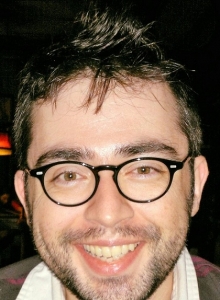
A new study with the contribution of BioISI researcher Nuno A. G. Bandeira was recently published in Nature Communications describing a novel catalytic system for energy applications that produces hydrogen from water splitting. This process is of high importance as it represents an alternative energy source production that is sustainable, clean, renewable, and relatively inexpensive. This catalyst has the best performance ever observed for a molecular species.
Nuno had a crucial contribution in the discovery: he performed a computational analysis of the electrochemical processes that occur during the catalysis at the atomic level.
The full paper is available at https://www.nature.com/articles/s41467-018-08208-4#Abs1
BioISI Best Scientific Image 2018
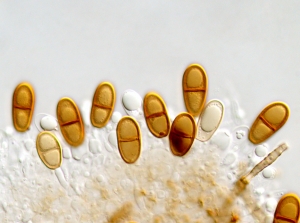
During the month of January, BioISI held the competition for Best Scientific Image 2018.
This year we welcomed 37 contributions. Thank you all for your fantastic images!
We would like to congratulate Alan Philips, the winner of the 2018 edition. Alan submitted a beautiful image of young conidia developing on conidiogenous cells of the fungus Dothiorella sempervirentis.
The winning photo will be featured in the front page of BioISI 2018 report.
Image: Dothiorella sempervirentis. Young conidia developing on conidiogenous cells of the fungus Dothiorella sempervirentis. This species was found on twigs and cones of Cupressus sempervirens in Northern Iran.
Upcoming Events
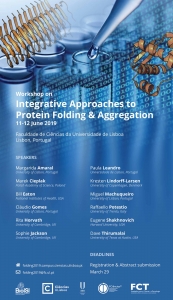
Workshop on Integrative Approaches to Protein Folding & Aggregation
11-12 June, University of LISBON, PORTUGAL
Registration and abstract submission deadline: 29 March 2019
In the last decade it has become increasingly accepted that progress in the field of protein folding requires a close dialogue between simulation and experiment.
The prospect of accurately assessing ever-larger timescales, as a result from progress on biomolecular modelling and simulation methodologies, opens up the possibility of using simulation to predict and interpret experimental data. On the other hand, the integration of experimental data with theory is critical for increasing the accuracy of force fields used in Molecular Dynamics simulations of biomolecules, and, therefore, experiments are crucial to improve simulations.
Furthermore, the recognition that protein folding pathologies and conformational disorders (e.g. highly debilitating degenerative disorders like Alzheimer’s and Parkinson’s diseases, and metabolic disorders) have an increasingly strong impact in our society and economy, calls for a much closer dialogue between basic science and clinical investigation in order to achieve effective therapeutic solutions.
The aim of this workshop is to bring together computational and experimental scientists with scientists doing translational research in order to foster the dialogue between the three communities so that novel and integrative approaches can be developed.

Brain Awareness Week @BioISI
From 11-17 March the Dana Foundation promotes the 2019 edition of the Brain Awareness Week (BAW), a global outreach campaign to increase public awareness of the progress and benefits of brain research. BioISI will join this initiative by promoting several activities directed to primary school, and lectures and lab visits/practical activities directed to secondary schools students, promoting the research activities developed by BioISI researchers in this field.


